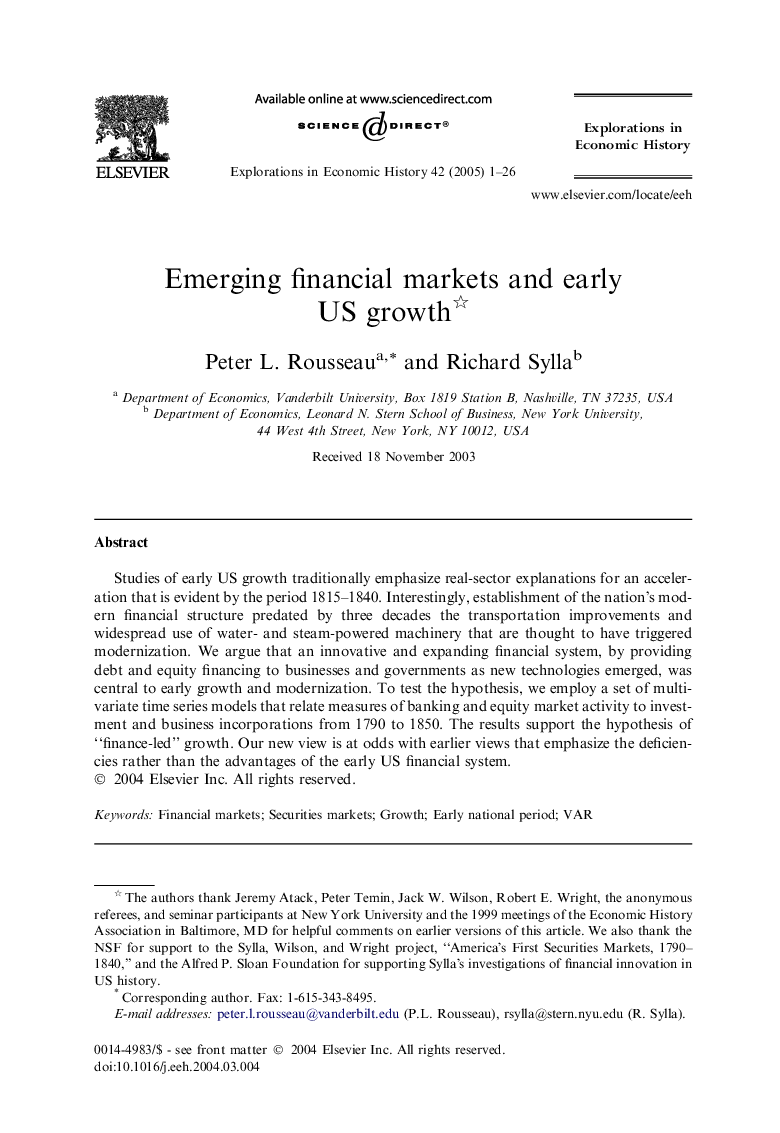| Article ID | Journal | Published Year | Pages | File Type |
|---|---|---|---|---|
| 9551278 | Explorations in Economic History | 2005 | 26 Pages |
Abstract
Studies of early US growth traditionally emphasize real-sector explanations for an acceleration that is evident by the period 1815-1840. Interestingly, establishment of the nation's modern financial structure predated by three decades the transportation improvements and widespread use of water- and steam-powered machinery that are thought to have triggered modernization. We argue that an innovative and expanding financial system, by providing debt and equity financing to businesses and governments as new technologies emerged, was central to early growth and modernization. To test the hypothesis, we employ a set of multivariate time series models that relate measures of banking and equity market activity to investment and business incorporations from 1790 to 1850. The results support the hypothesis of “finance-led” growth. Our new view is at odds with earlier views that emphasize the deficiencies rather than the advantages of the early US financial system.
Keywords
Related Topics
Social Sciences and Humanities
Arts and Humanities
History
Authors
Peter L. Rousseau, Richard Sylla,
